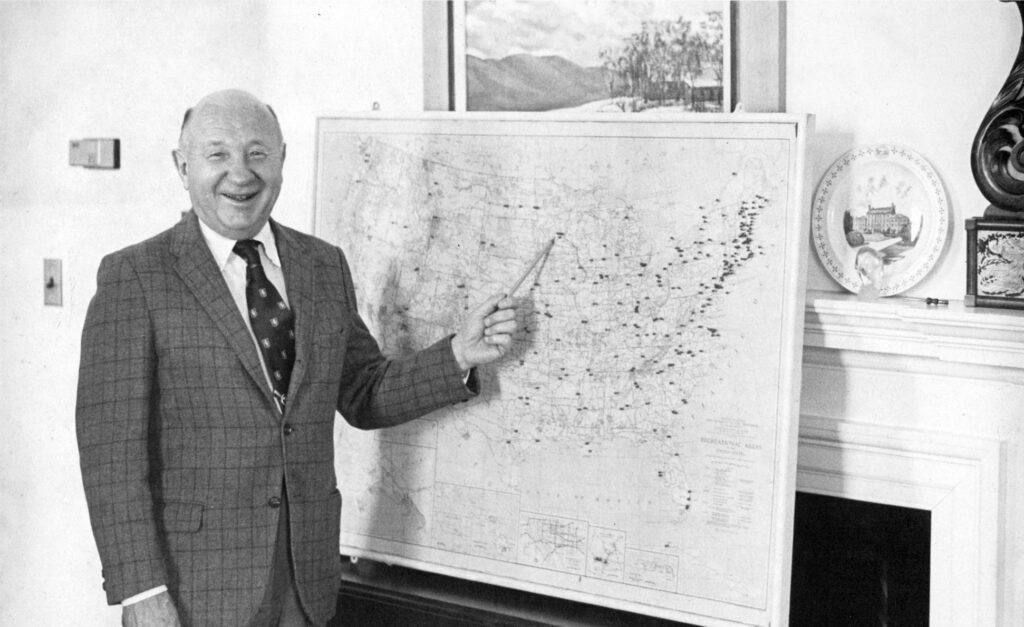Exeter 101 (and 102, 103 …)
Exeter’s founding documents predate the U.S. Constitution. That’s a lot of history. The Academy was founded in 1781 by John Phillips and his wife, Elizabeth, who resided in Exeter. A successful businessman, Phillips felt strongly about what we now call community service, having given much of his time to his church, the town and to the province. First a teacher by trade, he firmly believed in educating “youth from every quarter.”
Here’s a short primer on some of the Academy’s customs and traditions.
Who were the Phillips of Phillips Exeter?
John Phillips was born in 1719, the second son of Rev. Samuel and Hannah Phillips, of Andover, Massachusetts. His great-great-grandfather, Rev. George Phillips, had come from England to Massachusetts to seek religious freedom, and served as minister at Watertown, Massachusetts.
John entered Harvard at age 11, the youngest in his class by two years, graduating in 1735. After preaching in Andover for a couple of years, he moved to Exeter (the birthplace of his grandmother) and started teaching and occasionally preaching. He courted and married Sarah Gilman, in 1743. She was 16 years his senior. From then on, he developed the business that his cousin had started and engaged successively in general merchandise, export and import trade, real estate, and banking.
By 1765, the year of his wife’s death, he was the richest man in Exeter. He married his second wife, Elizabeth (Dennett) Hale, widow of Dr. Eliphalet Hale of Exeter, in 1767.
In 1778, John joined his nephew, Samuel, and other relatives in the founding of Phillips Academy in Andover, Massachusetts. John Phillips was so pleased with the success of the school that he decided to start a school in Exeter. The Act of Incorporation for the Exeter Academy, which both John and Elizabeth Phillips signed, is dated April 3, 1781. It took two more years to obtain a proper school building and find a teacher. Phillips Exeter Academy formally opened on May 1, 1783 with one teacher and 56 students.
John Phillips died in 1795. He is buried in Exeter Cemetery, his epitaph concluding with the words, “His appropriate monument are the institutions which bear his name.”
The Deed of Gift
With a flourish of the quill on May 17, 1781, John and Elizabeth Phillips signed the Deed of Gift that established Phillips Exeter Academy "for the purpose of promoting piety and virtue; and for the education of Youth." The document declared "the purpose of instructing youth, not only in the English and Latin grammar, writing, arithmetic, and those sciences wherein they are commonly taught, but more especially to learn them the great end and real business of living."
The Lion Rampant
The use of the lion as a symbol for the Academy almost certainly has its origins in the Phillips Family crest and specifically a bookplate designed for John Phillips in 1775. At some point, the name of John Phillips was removed from the plate and the inscription "In usum Academia Phillipsiae Exoniensis" ("for the use of Phillips Exeter Academy") was put in its place, and the motto "Pia mente Studeatur" ("Let studies find a reverent mind") was added at the top.
Non Sibi
The Latin term "Non Sibi," or "Not for Self," adorns the Academy seal. It testifies to the philosophy at Exeter that the wisdom gained here should be used for others as well as for oneself, a sentiment expressed in the deed of gift that "goodness without knowledge is weak and feeble, yet knowledge without goodness is dangerous, and that both united form the noblest character, and lay the surest foundation of usefulness to mankind."
Exeter vs. Andover
One of the oldest rivalries in the country, E/A pits the athletic teams from Phillips Exeter Academy and Phillips Academy against each other in fall, winter and spring. The first meeting of Big Red and Big Blue occurred in the spring of 1878, an Exeter victory on the baseball diamond. It’s a rivalry that can play an outsized role in how generations of young men and women measure their high school experience. More than one Exonian would be content with a simple epitaph. He or she “beat Andover.”
The Exonian
On April 6, 1878, the first edition of The Exonian rolled off the presses. On Page 1, the editors stated their motivation. "The lack of a proper medium for the interchange of opinions and the discussion of matters of general interest has long been felt and deplored by the students of the Academy." The newspaper is the oldest high school paper in the country, reported, edited and laid out by students each week of the school year. A digital issue of the newspaper was made available online in 2000.
The Weathervane
A triple-masted ship has been perched atop the Academy Building's bell tower since 1915. Given by an anonymous donor, the ship bears the name “Sidney S,” a reference to Sanford Sidney Smith, class of 1866, who was the president of the Trustees at the time. Why a ship? According to Myron Williams, in his 1957 book, The Story of Philips Exeter, the ship is an homage to the great seal of the State of New Hampshire, which features the Raleigh, one of the original 13 warships commissioned by the Continental Congress for a new American navy, built in 1776 in Portsmouth.
Academy Chronology
Phillips Exeter Academy was founded in 1781. It has been guided by 18 principals over the course of nearly 250 years and grown from an initial student body of 56 students to almost 1,100 today. The school began admitting female students in the fall of 1970 and in 2021 formally announced that all admissions decisions at Exeter would be made without regard for any family’s ability to pay tuition or other associated costs of attending the Academy.











